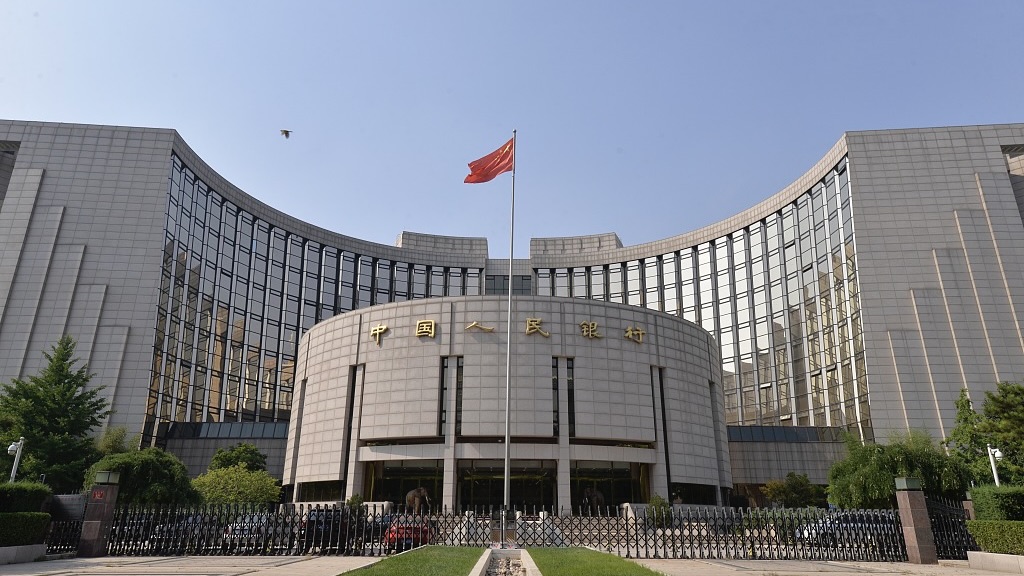
The People's Bank of China in Beijing. /CFP
The People's Bank of China in Beijing. /CFP
Editor's note: Jimmy Zhu is the chief strategist at Fullerton Research. The article reflects the author's opinions and not necessarily the views of CGTN.
Chinese banks have lowered the loan prime rate (LPR) for the first time since August 2022. This move signals policymakers' commitment to providing more economic stimulus in the second half of the year, in both monetary and fiscal terms.
The loan prime rate for one-year and five-year tenors were both reduced by 10 basis points to 3.55 percent and 4.2 percent respectively. This decision reflects a clear policy direction, signaling the authorities' intent to provide greater support to the private sector in promoting economic activity and consumption. Additionally, the reduction in the five-year rate, which serves as a reference for mortgages, aims to boost confidence in the housing sector.
The decision to cut interest rates was made after domestic consumer prices grew less than 1 percent for three consecutive months, as per the latest data. This trend of soft inflation readings has led authorities to take bold measures to boost demand, which is not unprecedented. The People's Bank of China (PBOC) has taken similar steps in the past, such as in 2002, 2008, 2015 and 2010 when China's consumer price index (CPI) slowed to below 1 percent. During these times, the PBOC responded by increasing liquidity and cutting interest rates.
Furthermore, the timing of the PBOC's decision to loosen its monetary policy coincides with a pause in the U.S. Federal Reserve's rate hikes, which will reduce upward pressure on the U.S. dollar and lessen the impact on other currencies like the Chinese yuan, mitigating any potentially negative side-effects from the monetary stimulus.
Impact on housing, business and financial market
The recent reduction in LPR could incentivize commercial banks to further reduce their long-term LPR quotations, which are used as a benchmark for mortgage loans. This could provide additional support to the current real estate market, as there has historically been a relationship between mortgage rates and domestic housing activities.
For instance, during 2015-2016, the PBOC reduced interest rates six times, leading to a decrease in mortgage rates that made it easier for people to obtain home loans. This increased the demand for homes and resulted in a rise in property prices. Similarly, during 2017-2018, stricter regulations led to an increase in mortgage rates, resulting in a slowdown in the growth of property prices.
Lowering interest rates can also stimulate consumer spending by making borrowing cheaper for households and small private enterprises. This can result in more disposable income for consumers, who are likely to increase their spending on goods and services. As a result, businesses may need to hire more workers, further increasing consumer spending and boosting economic growth.
Lower interest rates can also have a positive impact on financial markets, as investing becomes more attractive when borrowing is cheaper. Additionally, lower interest rates can reduce the attractiveness of some safe-haven investments, encouraging investors to place their money into riskier investments with potentially higher returns, such as stocks and mutual funds.
The recent outperformance of Japanese stocks is a classic example of this phenomenon, which was partly driven by the Bank of Japan's decision to maintain its ultra-low interest rate policy while most other central banks were tightening.
While the LPR cut is a step in the right direction, more targeted policies are needed to make the monetary policy more effective. For example, the government could consider lowering the threshold for home purchases and increasing purchasing power to make homeownership more affordable for Chinese families.
Furthermore, the PBOC needs to take a more proactive approach to guide interest rates lower for private companies and continue channeling more credit into them. One of the key challenges of a rate cut is ensuring that lower interest rates are passed on to consumers and businesses.
In the past, some banks have been hesitant to lower their lending rates, which can limit the impact of rate cuts on the broader economy. Therefore, it is important for the central bank to communicate clearly with commercial banks about the need to pass on the benefits of a rate cut to borrowers.
That said, more targeted measures in the second half of the year are expected. The PBOC could establish targeted lending facilities for small and medium-sized enterprises (SMEs) and other private companies. These facilities will definitely make it easier for SMEs to access credit. Besides that, the PBOC could also consider reducing rates for certain industries based on specific situations.
Apart from the monetary stimulus, we expect more fiscal measures to arrive in the coming months and quarters, including increasing bond issuance quotas and spending on infrastructure projects and other investment. Monetary policy is just one tool that governments can use to stimulate the economy, but it doesn't create much demand by itself.
Fiscal policy which involves government spending can also play a critical role in boosting demand and supporting economic growth. Coordination between monetary and fiscal policymakers can help ensure that these policies work together effectively to support the broader economy.